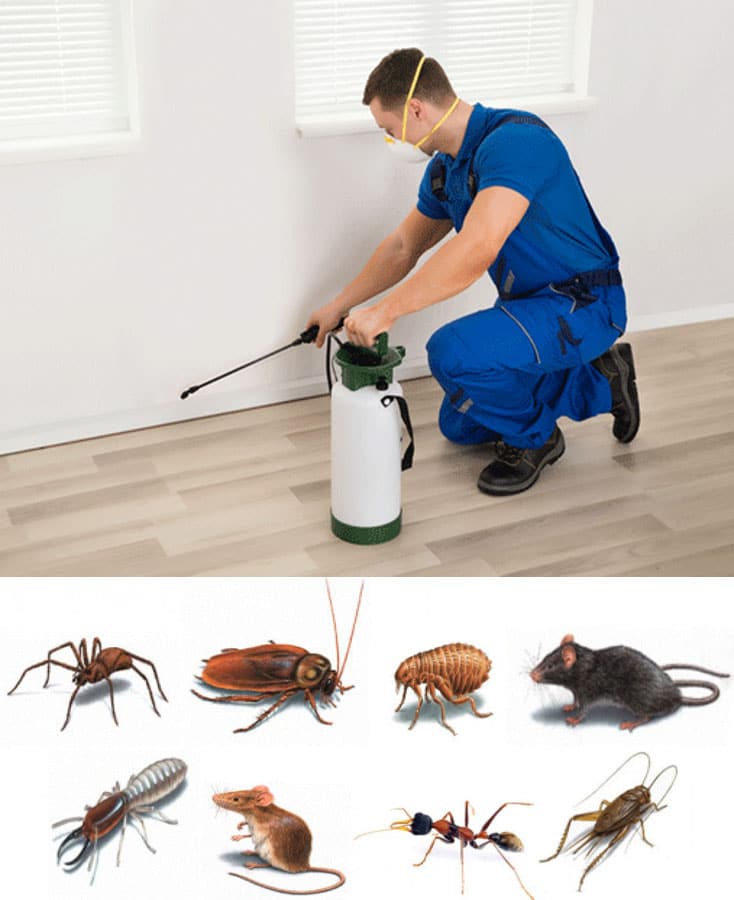A1 Bed Bug Exterminator Charlotte - Effective and Budget Friendly Services
A1 Bed Bug Exterminator Charlotte - Effective and Budget Friendly Services
Blog Article
Bed Pest Therapy Break Down: Comparing Chemical Vs. Non-Chemical Solutions
In the realm of parasite control, especially when handling the relentless issue of bed insects, the option between chemical and non-chemical therapy options can be a critical one. Both strategies provide unique benefits and drawbacks, influencing variables such as efficiency, safety and security factors to consider, and overall price. By checking out the nuanced information of each approach, a more clear understanding of which path to pursue in resolving a bed pest infestation can be attained.
Effectiveness of Chemical Treatments
Chemical therapies for bed bug problems have actually been widely recognized for their potent and rapid efficacy in eradicating these pests. When thinking about the effectiveness of chemical therapies, it is crucial to recognize that they can give a extensive and quick remedy to a bed bug problem.
In addition, chemical treatments have the benefit of using residual results, implying that they can continue to remove bed insects even after the initial application. This residual activity is especially valuable in combating any type of potential re-infestations. In addition, the quick action of chemical treatments can bring relief to individuals dealing with severe bed insect problems, allowing them to restore control of their living areas quickly.
Security Interest In Chemical Solutions
One important aspect that calls for careful consideration when making use of chemical services for bed insect therapy is making sure the safety of owners and the atmosphere. While chemical therapies can be effective in getting rid of bed pests, they may position risks if not managed properly. Among the main security worry about chemical remedies is the possible harm they can cause to human health. Exposure to particular chemicals made use of in bed pest therapies can bring about respiratory system issues, skin inflammation, or other unfavorable responses, specifically in individuals with pre-existing conditions or sensitivities. Additionally, improper application or dose of chemical pesticides can result in harmful residues sticking around in the cured location, posing long-lasting health dangers to residents.
In addition, the environmental impact of chemical options is one more substantial consideration. Some chemicals used in bed pest treatments might be harmful to useful insects, wild animals, and ecosystems if they seep right into the dirt or water systems. It is crucial to use chemical therapies judiciously, adhering to safety guidelines, and considering much less hazardous choices to reduce these threats and guarantee the effective and risk-free monitoring of bed bug problems.
Benefits of Non-Chemical Strategies
Considering the potential safety worries and environmental impact linked with chemical remedies for bed insect treatment, exploring non-chemical approaches offers an encouraging choice with numerous unique advantages. Non-chemical treatments are ecologically pleasant, as they do not add to air or water air pollution, making them a lasting selection for bug control.
Additionally, non-chemical options can be reliable in targeting bed insects, consisting of hard-to-reach locations where chemical therapies may not permeate - A1 exterminator charlotte nc. Methods such as warmth therapy, vacuuming, steam cleansing, and cushion encasements supply comprehensive obliteration without the use of harmful chemicals.
Limitations of Non-Chemical Treatments

Furthermore, non-chemical therapies typically call for multiple applications to accomplish effective removal. This can be lengthy and may not always assure total elimination of all bed insects and their eggs, specifically in hard-to-reach or covert locations.
In addition, the success of non-chemical treatments heavily counts on proper application and thoroughness, which can be testing for people without specialist expertise. Insufficient application of non-chemical approaches may result in insufficient removal, causing persistent infestations and the requirement for additional treatments.
As a result, while non-chemical therapies have their benefits, click here for more it is important to recognize these restrictions and consider them when determining the most efficient approach for managing bed bug infestations.
Cost Comparison: Chemical Vs. Non-Chemical Options
Given the limitations associated with non-chemical treatments, a crucial facet to evaluate in the context of bed pest management is the expense contrast in between chemical and non-chemical alternatives. Chemical therapies usually involve the application of insecticides by specialists, which can vary from link $250 to $900 per space, depending on the extent of the problem and the dimension of the area to be treated. In comparison, non-chemical treatments like warmth treatment or steam can be extra costly, with costs varying from $1,000 to $6,000 for an entire home. While the preliminary price of chemical treatments might seem lower, several therapies might be needed to fully eliminate the problem, possibly raising the total expense. On the other hand, non-chemical options may offer a more sustainable and environment-friendly solution, although they can be cost-prohibitive for some individuals. Ultimately, when taking into consideration the expense of bed bug treatment options, it is essential to evaluate the upfront expenses against the performance and lasting sustainability of the selected method.
Final Thought

Thinking about the potential security problems and ecological effect linked with chemical services for bed pest treatment, exploring non-chemical strategies presents an encouraging alternative with numerous unique advantages.Provided the restrictions associated with non-chemical treatments, an essential facet to evaluate in the context of bed insect administration is the expense comparison between chemical and non-chemical choices. In comparison, non-chemical treatments new home pest inspection like warmth treatment or steam can be a lot more expensive, with prices varying from $1,000 to $6,000 for an entire home. While the initial expense of chemical therapies might appear lower, numerous treatments may be required to fully remove the infestation, potentially increasing the general expense.In conclusion, when contrasting chemical and non-chemical bed pest therapy choices, it is necessary to think about efficiency, safety and security, benefits, restrictions, and expense.
Report this page